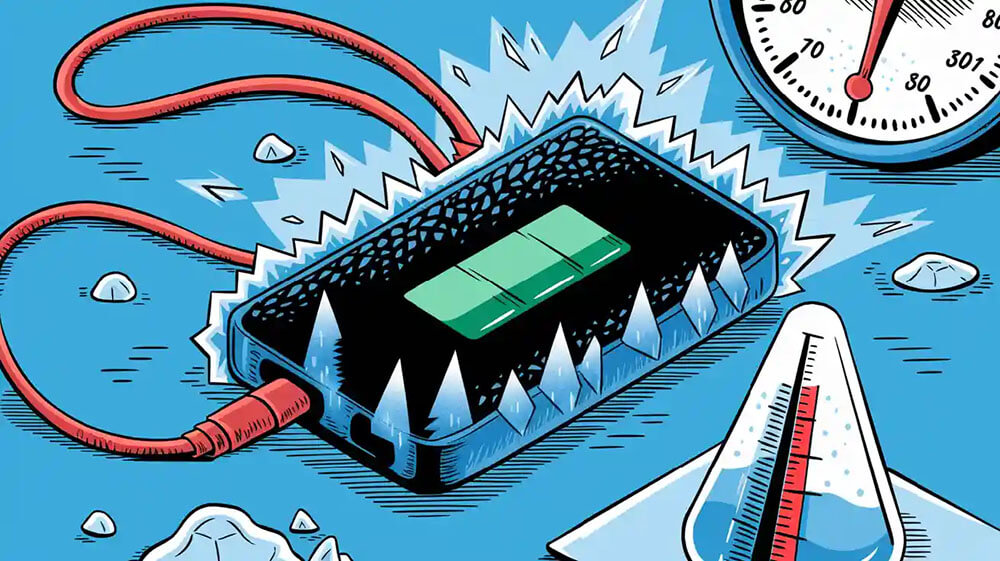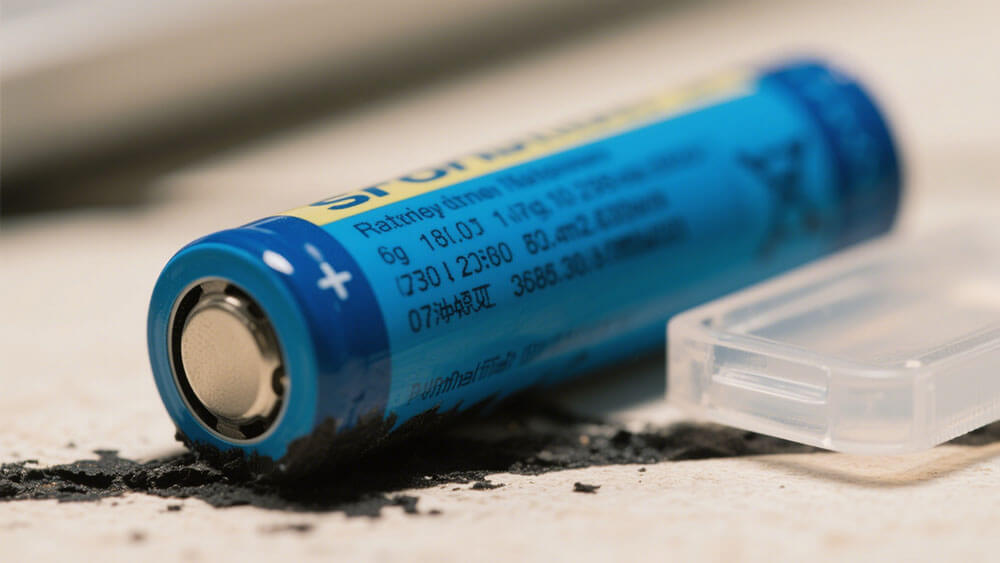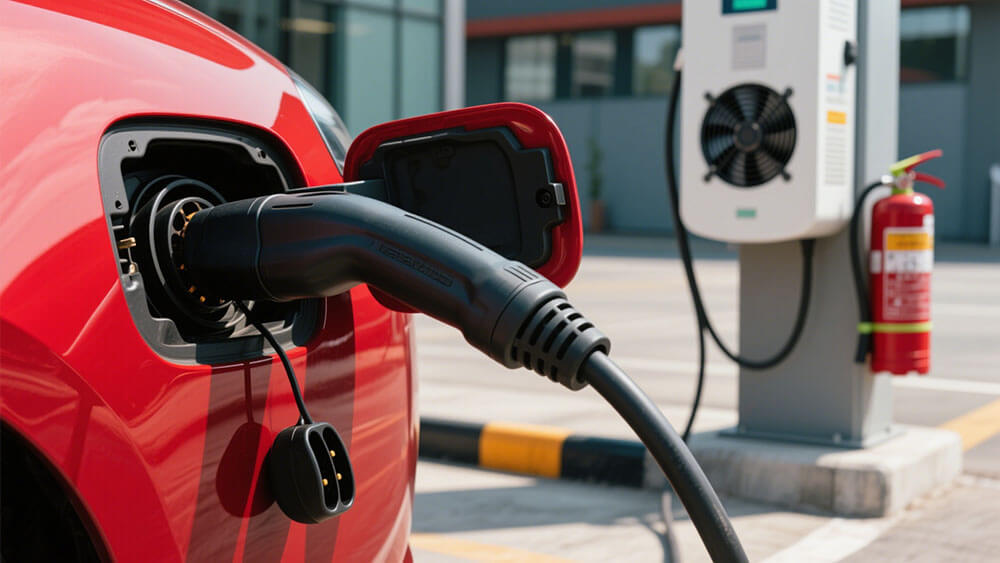
Charging lithium batteries in freezing temperatures can severely impact their performance and safety. For instance, at -20°C, these batteries operate at only 50% capacity. Low-temperature charging of lithium batteries causes lithium plating and increases internal resistance, leading to permanent damage. Businesses must prioritize battery management strategies to ensure reliability in cold environments.
Key Takeaways
Charging lithium batteries in freezing weather can harm them. This includes less capacity and more internal resistance.
Warming batteries before charging is important to stop damage. It prevents lithium plating and keeps them safe in the cold.
Special chargers and battery systems help batteries work well. They also keep lithium batteries safe in cold temperatures.
Part 1: The Science Behind Low-Temperature Charging of Lithium Batteries

1.1 How Freezing Temperatures Impact Lithium Battery Chemistry
Freezing temperatures significantly alter the chemistry of lithium-ion batteries, affecting their ability to store and deliver energy efficiently. At subzero temperatures, the chemical reactions within the battery slow down, reducing its capacity and power output. The electrolyte, which facilitates the movement of lithium ions between the electrodes, becomes more viscous and less conductive. This increased resistance hampers ion flow, leading to diminished battery performance.
Physical damage is another concern when lithium batteries freeze. Extreme cold can cause structural issues, such as cracks in the cathode, which result in capacity loss and potential leaks. Studies have shown that batteries stored below zero degrees Celsius lose up to 5% more capacity after 100 charge cycles compared to those stored at warmer temperatures. These effects underscore the importance of proper handling and storage of lithium batteries in cold weather.
1.2 The Role of Electrolyte Viscosity and Ion Movement
The electrolyte plays a critical role in the operation of lithium-ion batteries. It acts as a medium for lithium ions to travel between the anode and cathode during charging and discharging. However, cold temperatures increase the viscosity of the electrolyte, making it thicker and less effective at conducting ions. This slowdown in ion movement leads to higher internal resistance, which reduces the battery’s ability to deliver current efficiently.
In addition to reduced conductivity, the sluggish ion movement can cause uneven lithium deposition on the anode. This phenomenon contributes to long-term battery failure and compromises the safety of the battery pack. Manufacturers often address these challenges by incorporating advanced battery management systems (BMS) that monitor temperature and adjust charging protocols accordingly.
1.3 Lithium Plating and Its Risks During Charging in Cold Weather
Lithium plating is one of the most dangerous consequences of charging lithium batteries in cold temperatures. When the battery is exposed to subzero temperatures, lithium ions struggle to embed themselves into the anode material. Instead, they deposit as metallic lithium on the anode’s surface, forming dendritic structures known as lithium plating.
These dendrites pose serious risks to battery safety and longevity. They can puncture the separator between the anode and cathode, causing internal short circuits. This damage may lead to thermal runaway, a condition where the battery overheats and potentially catches fire or explodes. Lithium plating also consumes active lithium, reducing the battery’s capacity and lifespan. To mitigate these risks, you should avoid charging lithium batteries in freezing temperatures and consider pre-warming them before use.
Part 2: Consequences of Charging Lithium Batteries in Freezing Temperatures

2.1 Permanent Damage to Lithium Battery Packs
Charging lithium batteries in freezing temperatures can cause irreversible damage to the battery pack. When exposed to subzero temperatures, the internal chemical reactions slow down significantly. This reduced activity leads to uneven lithium deposition on the anode, forming metallic lithium. Over time, this process degrades the structural integrity of the battery.
Laboratory tests reveal that low-temperature charging accelerates cathode particle fractures. These fractures isolate active materials, reducing the battery’s capacity and lifespan. The separator-cathode interface experiences high local current densities due to slower ion mobility, further exacerbating the damage.
The long-term effects of charging in cold conditions include a higher rate of capacity loss and increased internal resistance. For instance, cells charged at 0°C with a high current rate can lose over 35% of their nominal capacity after just 132 cycles. This highlights the importance of maintaining lithium batteries within their optimal temperature range to avoid premature failure.
2.2 Reduced Capacity and Increased Internal Resistance
Cold temperatures significantly impact the performance of lithium-ion batteries. The electrolyte becomes more viscous, slowing down the movement of lithium ions. This reduced ion mobility increases the battery’s internal resistance, making it harder for the battery to deliver power efficiently. As a result, you may notice a decrease in battery capacity and overall performance.
Key Impacts of Cold Temperatures on Lithium-Ion Batteries:
Slower ion transfer reduces power output.
Increased resistance leads to decreased capacity.
Chemical reactions become less efficient, degrading the battery’s discharge rate.
In addition to these effects, the coating of lithium ions on the anode surface further contributes to battery failure. This phenomenon not only reduces the rated capacity but also shortens the battery’s lifespan. Effective thermal management and preconditioning are essential to mitigate these issues and maintain battery performance in cold climates.
2.3 Safety Hazards: Short Circuits and Thermal Runaway
Charging lithium batteries in cold weather poses significant safety risks. One of the most dangerous outcomes is lithium plating, where metallic lithium forms on the anode. These deposits can grow into dendrites, which may puncture the separator between the anode and cathode. This damage can lead to internal short circuits, increasing the risk of thermal runaway.
Thermal runaway occurs when the battery overheats uncontrollably, potentially causing fires or explosions. The combination of high internal resistance and uneven lithium deposition makes batteries in cold weather particularly vulnerable to this hazard. To prevent such incidents, you should avoid charging lithium batteries in subzero temperatures and use specialized chargers designed for low-temperature environments.
⚠️ Tip: Always monitor the temperature range for lithium batteries during charging. Using a battery management system (BMS) can help detect unsafe conditions and prevent accidents.
By understanding these risks and adopting best practices, you can ensure the safe and efficient operation of lithium-ion batteries in cold conditions.
Part 3: Best Practices for Charging Lithium Batteries in Cold Weather

3.1 Pre-Warming Lithium Batteries Before Charging
Pre-warming lithium batteries is essential to prevent damage during charging in cold weather. When the internal temperature of a battery drops below freezing, charging can lead to lithium plating and permanent degradation. To avoid these risks, you should ensure the battery reaches a safe temperature before charging.
Effective pre-warming methods include:
Using external heating pads to raise the battery’s temperature.
Storing batteries in heated compartments to counteract the effects of cold temperatures.
Allowing the battery to naturally warm up indoors before charging.
These practices not only prevent lithium-ion battery freezing but also enhance battery performance and longevity in cold conditions.
3.2 Using Battery Management Systems for Temperature Monitoring
Battery management systems (BMS) play a critical role in monitoring and maintaining the optimal temperature range for lithium batteries. Advanced BMS technologies ensure safe charging by detecting temperature fluctuations and adjusting charging protocols accordingly.
Strategy Type | Description |
|---|---|
IoT Integration | Utilizes IoT for real-time data acquisition to monitor battery parameters continuously. |
Hybrid Methodologies | Combines data-driven and model-based approaches to enhance prediction accuracy and reliability. |
Machine Learning | Employs advanced ML techniques for accurate predictions of remaining useful life (RUL). |
By implementing these strategies, you can minimize the effects of cold weather on batteries and reduce the risk of battery failure.
3.3 Specialized Chargers for Low-Temperature Charging
Specialized chargers designed for low-temperature charging are indispensable for lithium-ion batteries in cold weather. Unlike standard chargers, these devices maintain precise voltage and current levels, preventing lithium plating and ensuring safe operation. Studies show that using specialized chargers significantly reduces the risk of permanent battery degradation when charging in cold conditions. Investing in these chargers is a proactive step toward preventing battery failure and maintaining optimal battery performance.
3.4 Storage and Handling Tips for Lithium Batteries in Cold Weather
Proper storage and handling of lithium batteries in cold weather are crucial for preventing damage and ensuring long-term reliability. Follow these tips to protect your batteries:
Store batteries in a dry, insulated environment to prevent exposure to extreme cold.
Avoid leaving batteries in vehicles or unheated spaces for extended periods.
Use thermal insulation covers to maintain a stable temperature during storage.
Adopting these practices will help you maintain the integrity of your lithium batteries and avoid the adverse effects of cold temperatures.
Tip: For customized solutions tailored to your specific needs, consult with Large Power.
Charging lithium batteries in freezing temperatures leads to significant risks, including reduced capacity, increased internal resistance, and potential safety hazards like thermal runaway. Cold temperatures also accelerate battery failure by increasing the frequency of charging cycles. To mitigate these risks, you should adopt best practices such as pre-warming batteries, using advanced chargers, and implementing battery management systems. These measures ensure the safe and efficient operation of lithium-ion batteries in cold environments. Investing in proper equipment and training not only extends battery lifespan but also enhances reliability for industrial and commercial applications. For tailored solutions, consult Large Power.
FAQ
1. Can lithium batteries be charged safely in freezing temperatures?
No, charging lithium batteries below freezing can cause lithium plating, reduced capacity, and safety hazards. Pre-warming the battery is essential for safe charging.
2. What is the role of a Battery Management System (BMS) in cold weather?
A BMS monitors temperature and adjusts charging protocols to prevent damage and ensure the safe operation of lithium batteries in low temperatures.
3. How can businesses optimize lithium battery performance in cold climates?
Use pre-warming techniques, specialized chargers, and advanced BMS. For tailored solutions, consult Large Power.




